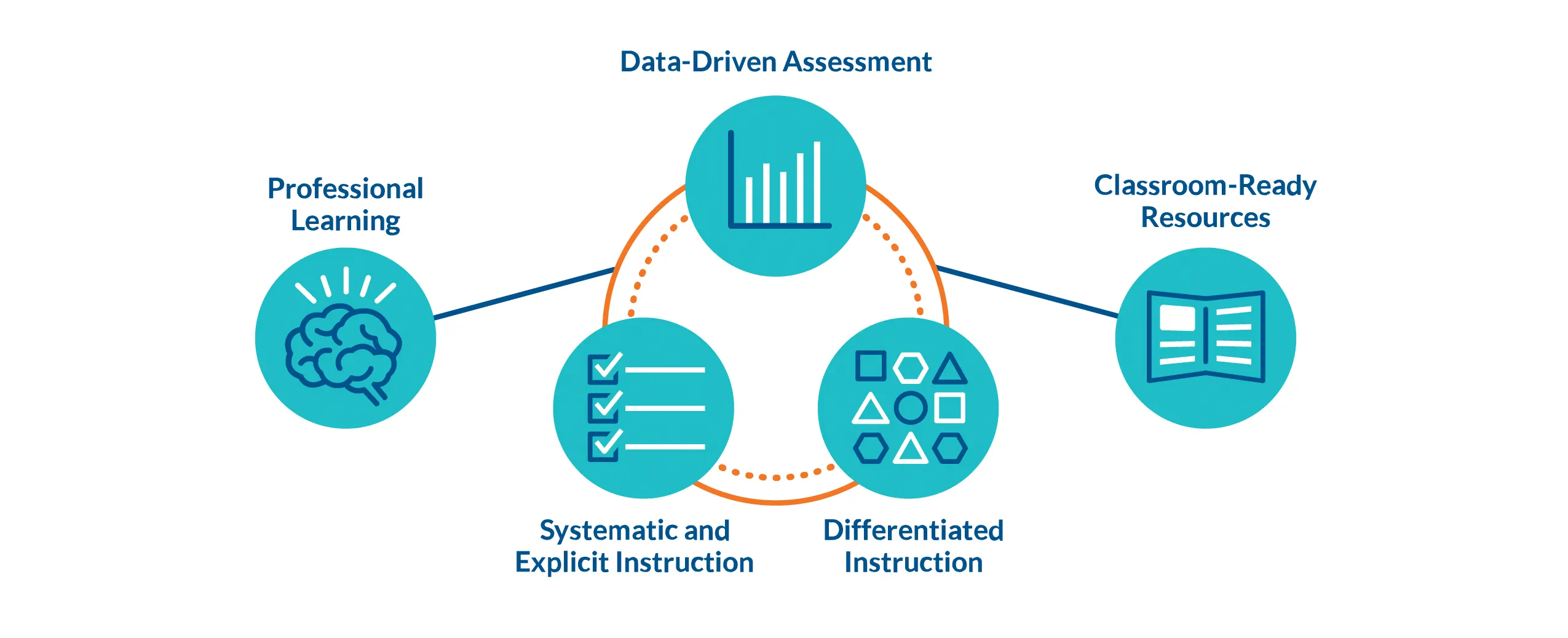The Science of Reading
Understand the scientific approach to developing skilled readers.
What Is the Science of Reading?
The term Science of Reading refers to the entire body of scientific evidence on how humans read and learn to read. It is an international, interdisciplinary field of study more than 100 years old that is constantly evolving as new research is published. Numerous fields such as cognitive psychology, educational psychology, neuroscience, and linguistics each offer nuanced perspectives to inform our understanding of effective reading development.
Decades of research have proven that:
- Learning to read is not a natural process like learning to speak
- Most students require explicit and systematic reading instruction in all domains
- Foundational skills such as phonological awareness and phonics are critical to cracking the code of written language
- Effective reading instruction also involves exposure to conceptually connected text sets and rich vocabulary
Putting Scientific Evidence to Work in Reading Instruction
Curriculum and instruction informed by select findings from reading research can be described as aligned with/based on/informed by the Science of Reading. These resources help bridge science to instruction and support teachers in making an educational impact on students in the classroom.
The Essential Elements of Effective Reading Instruction
Translating the Science of Reading into action within your classroom can yield life-changing upsides: efficient use of instructional time, visibility into student progress, and affirmation in your impact.
Professional Learning
Teachers are the experts and champions when it comes to blending the art and science of how evidence turns into practice in the classroom. Teach with assurance in your impact by staying informed through professional learning.
Data-Driven Assessment
Assessment data serves as the launch pad for instruction. Insight into what students already know and what they don’t know enables the thorough and efficient use of instructional time.
Systematic and Explicit Instruction
Developing readers benefit when systematic and explicit instruction provides clarity on concrete steps necessary for progression across increasingly complex skills and strategies.
Differentiated Instruction
Students are as different as the books within your classroom. Differentiating instruction acknowledges and accommodates diverse learning needs, helping each individual reach and exceed their potential.
Classroom-Ready Resources
Engaging with a variety of complex and appropriately challenging grade-level texts allows students to push the pace of their growth.

Create a Love of Reading with Curriculum Built on the Science of Reading
Learning to read is an essential skill that unlocks many doors in education. As instruction across all subject areas—including mathematics and science—comes to depend more heavily on reading skills, supporting students to close the achievement gap is more critical now than ever before.
Curriculum Associates provides research-backed, high-quality instruction grounded in the Science of Reading to accelerate student reading achievement for all Grades K–12 students.
Related Resources
What the Science of Reading Tells Us about Learning to R...
Gain clarity on what the Science of Reading is and how it can help inform your reading instruction.
Oral Fluency with Glendaliz Martinez
Join Glendaliz Martinez as she explores strategies and insights to enhance students' oral fluency in this...
Putting Scientific Evidence to Work in Reading Instructi...
Explore the Science of Reading's role in improving literacy with actionable insights and research-based s...
Related Programs
Magnetic Comprehension
Strengthen Reading Comprehension with Knowledge-Rich Texts and Strategic Supports
